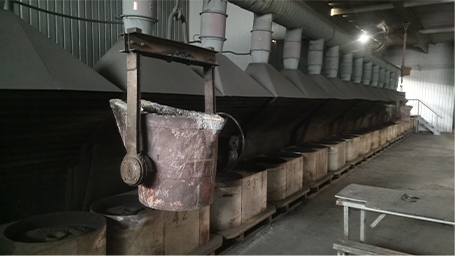Sen . 18, 2024 19:47 Back to list
bus brake drum
Understanding Bus Brake Drums An Essential Component of Vehicle Safety
When it comes to the safety and efficiency of a bus, one of the most critical components is the brake system. Among the various parts of this system, the brake drum plays a pivotal role in ensuring that the vehicle can stop effectively, safeguarding both passengers and other road users. This article explores the importance, functioning, and maintenance of bus brake drums.
A brake drum is a cylindrical component that houses the brake shoes. When the driver applies the brakes, hydraulic fluid forces the brake shoes against the inner surface of the drum. This friction generates the necessary resistance to slow down and eventually stop the bus. The effectiveness of this system is paramount, especially given the size and weight of buses, which necessitate reliable braking performance to handle emergency stops or quick deceleration.
One of the key advantages of using brake drums is their ability to dissipate heat generated during braking. As heat builds up, it can cause brake fade, where the brakes become less effective. Brake drums are designed to handle high temperatures and ensure consistent performance, even under strenuous conditions. Their thermal mass allows them to absorb and dissipate heat, making them suitable for heavy-duty vehicles like buses that operate under various driving conditions.
bus brake drum

However, like all mechanical components, brake drums are subject to wear and tear. Factors such as frequent stop-and-go driving, aggressive braking, and exposure to road debris can lead to surface deterioration or even cracking. Regular inspections are crucial to ensure that the brake drums are in good condition. Bus operators should follow a proactive maintenance schedule, which includes checking for signs of wear, measuring the thickness of the drum, and ensuring that the brake shoes are aligned properly.
In addition to routine maintenance, it’s essential to consider the material composition of the brake drum. Most bus brake drums are made from cast iron or composite materials, each offering different benefits in terms of weight, cost, and thermal properties. Understanding these materials can aid in selecting the right brake drum for specific bus applications, balancing performance with budget considerations.
In conclusion, bus brake drums are fundamental to the safety and efficiency of bus operations. By understanding their function, benefits, and maintenance needs, bus operators can ensure reliable braking performance that protects both passengers and the public. Investing in quality brake drums and adhering to a diligent upkeep regimen will contribute significantly to the overall safety of bus transportation. As technology advances, future innovations in brake drum design promise to enhance performance even further, shaping the future of public transport and road safety.
-
Brake Drum Liza Durable & High-Performance Brake Solutions
NewsMay.29,2025
-
Brake Drum Liza Durable Drum Brake & Shoe Replacement Solutions
NewsMay.29,2025
-
Brake Drum Liza High-Quality Drum Brake & Shoe Solutions
NewsMay.29,2025
-
Brake Drum Liza Durable Drum Brake & Shoe Solutions for Vehicles
NewsMay.29,2025
-
Brake Drum Liza Premium Drum Brake Components & Shoes
NewsMay.29,2025
-
Brake Drum Man Durable Drum Brake Drums & Shoes Supplier
NewsMay.28,2025
